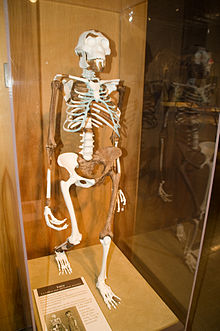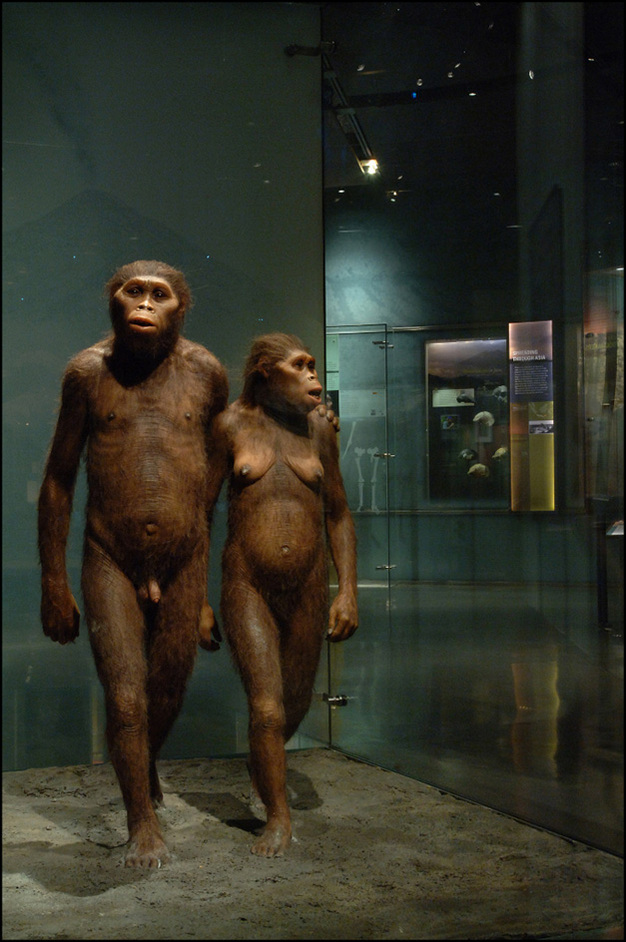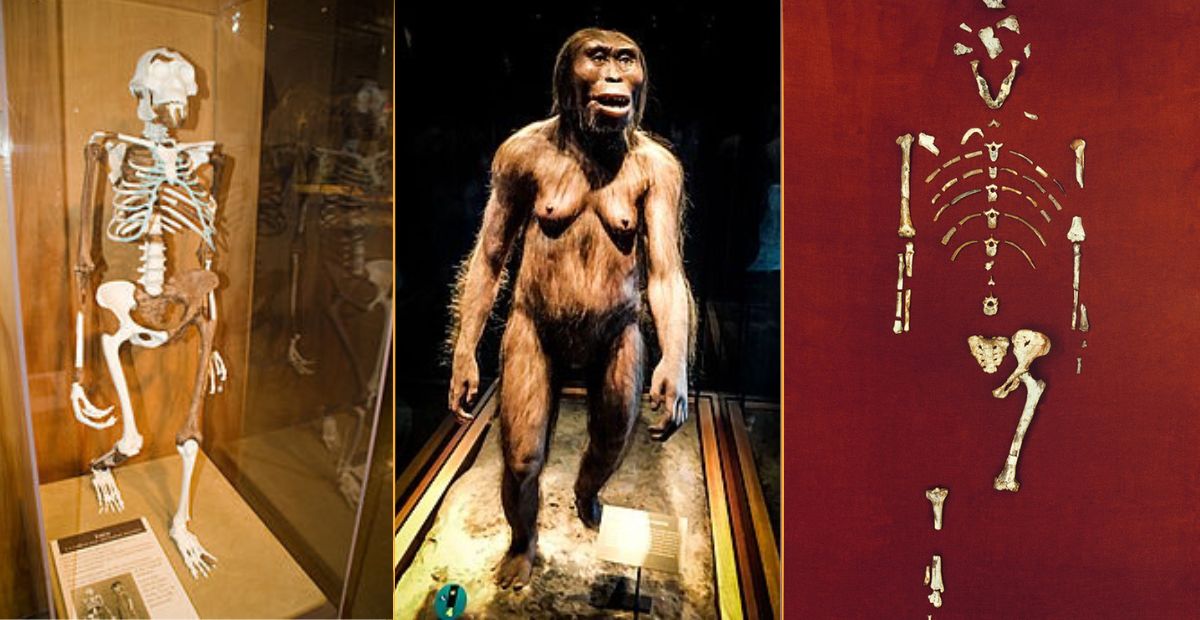Unraveling the Mysteries of Lucy: 3.2 Million-Year-Old Human Ancestor Discovered in Ethiopia
It was November 24, 1974. In the United States of America, the year’s number-one music singles included “Annie’s Song” by John Denver and “Bennie and the Jets” by Elton John, but an international field crew of paleoanthropologists, geologists, graduate students, and Ethiopian fossil-hunters were not listening to the latest U.S. hits under their research tent; they were listening to the 1967 Beatles track, “Lucy in the Sky with Diamonds.”
So, it was the nickname “Lucy,” not “Annie” or “Bennie,” as it might have been, assigned to a stunning partial skeleton of a fossil human ancestor, the first fragments of which were discovered by Dr. Donald Johanson and his graduate student, Tom Gray, while walking across 3.2 million-year-old sediments at the site of Hadar, Ethiopia.
Discovering Lucy
In 1974, Johanson was 31 years old, a newly-minted Ph.D. and professor of anthropology in Cleveland, Ohio. He had traveled to Ethiopia before, in 1972, on a reconnaissance trip to inspect the geological formations and fossiliferous deposits of the Afar region of Ethiopia, and again in 1973, when he made his first hominin discovery at Hadar—a knee joint.

As the 1974 expedition began, Dr. Johanson was optimistic about what the team might find and he became more expectant when his Ethiopian colleague, Alemayehu Asfaw, discovered some hominin jaws near their Hadar camp (Johanson & Edey, 1981; Johanson and Wong, 2009).
One could say Lucy’s discovery is a “funny bone story.” The first fragment of Lucy’s skeleton that Johanson spotted was the elbow region of her ulna (when you bump the ulnar nerve in your elbow, it presses against your humerus and you get that tingly, “funny bone” feeling).
Lucy’s broken ulna was protruding from the sediments and Johanson could tell by its shape and size that it definitely belonged to a primate and could very possibly be the fossilized remains of a hominin. Johanson and Gray carefully scanned the ground and were delighted to discover many more fossilized bone fragments, including parts of a cranium, mandible, ribs, pelvis, thighs, feet, and more (Figure 1).
The fossil locality at Hadar where the pieces of Lucy’s skeleton were discovered is known to scientists as Afar Locality 288 (A.L. 288). Johanson and the rest of the 1974 field team collected every fossil fragment they could find at A.L. 288.
They recorded the fossil fragments’ exact locations, carefully carried them back to their research camp, and studied them closely. The Hadar field crew had so many questions about these fossils – let’s explore some of those important questions and find out what scientists have since discovered about Lucy. (For a more detailed account of Lucy’s discovery and early fieldwork at Hadar, see Johanson and Edey, 1981).

How do we know that all of those fossilized bones belong to Lucy’s skeleton?
If the fossil fragments belonged to more than one individual, we would expect to find more fossilized bones than could possibly belong to a single skeleton. If, for example, the Hadar field team had found fragments of three femora or had discovered two mandibles, they would have known immediately that the remains of multiple individuals were eroding out of the sediments.
This is not what the Hadar team discovered. Instead, they found only enough bone fragments to compose one partial skeleton; the probability that these fossilized bones are from more than one individual is therefore very low.
In addition, the color and appearance of fossils are determined, in part, by the minerals that were present in the deposits where the fossils formed and the type of weathering the fossils experienced, so a group of fossils that formed at different times in different deposits would likely be different colors and show different signs of weathering. Lucy’s skeleton comprises fossil fragments that are extremely similar in appearance.

How do we know Lucy was a female?
Johanson hypothesized almost immediately that Lucy was a female because of her small size. He was knowledgeable about fossil hominin discoveries made by other researchers, in other parts of Africa, in decades prior to the Lucy discovery.
He knew that, like many living primates, hominins tended to be sexually dimorphic, meaning the males were bigger than the females; therefore, it seemed clear that the relatively small bones recovered from A.L. 288 were those of a female (see Scott & Stroik, 2006, for a discussion of the alternative models of sexual dimorphism in Lucy’s species).
Later, scientists estimated Lucy’s height based on the length of her femur, even though the end of her femur had been crushed prior to complete fossilization. They used mathematical formulas that relate femur length to stature to predict that Lucy stood approximately 104 to 106 centimeters (cm) tall (Feldesman & Lundy, 1988; Jungers, 1988; McHenry, 1991). Males of Lucy’s species were probably closer to 150 cm tall (McHenry, 1991). In 2008, a team of scientists virtually reconstructed Lucy’s damaged femur using 3D computer-based technology and found that it was probably just a few millimeters shorter than was previously thought (Sylvester, Merkl, et al., 2008).
Could Lucy’s skeleton be small because she was a child when she died?
No. Developmentally, Lucy was a fully adult individual when she died, which is evidenced by her teeth and bones. For example, Lucy’s third molars, or “wisdom teeth,” had erupted and were even a little bit worn at the time she died (Johanson, Taieb, et al., 1982). Most modern human females get their wisdom teeth and are biologically mature by the time they are 18 years old (to compare Lucy’s teeth to a modern human’s teeth, visit www.eLucy.org).
Among living wild chimpanzee populations, the timing of a third molar eruption typically falls between 11 and 13 years of age (Smith and Boesch, 2011). Based on the fossilized teeth and bones of infant and juvenile hominins, we know that hominins like Lucy developed faster than humans, but more slowly than chimpanzees.
Therefore, scientists have suggested that Lucy was between 12 and 18 years old when she died. Evidence from Lucy’s skeleton, specifically features of her left os coxa (hip bone) and her limb bones, also supports the conclusion that she was a fully mature adult individual (Johanson, Taieb, et al.).
How do scientists know the species to which Lucy belongs?
When Johanson and Gray discovered Lucy’s fossilized remains, they didn’t know her species. After a close examination of the fossils, the research team felt confident they were looking at the bones of a primate that walked upright. The fragmentary bones of Lucy’s hindlimb were sufficiently similar to the knee joint found in 1973 to support the hypothesis that she was a biped.
Ultimately, evidence from other parts of Lucy’s skeleton, such as her teeth and pelvis, demonstrated that she was, in fact, a hominin (see Kimbel & Delezene, 2009, for a detailed description of Lucy’s pelvic anatomy and its locomotor implications).
In the few years following Lucy’s discovery, many more hominin specimens were collected from Hadar, including hundreds of specimens from the locality A.L. 333. The A.L. 333 assemblage includes the remains of at least thirteen individuals and is nicknamed the “First Family” (Johanson, Taieb, et al., 1982; Kimbel and Delezene, 2009).
In addition, hominin fossils resembling those found at Hadar were discovered at a fossil site called Laetoli in Tanzania. Johanson and his colleague, Dr. Tim White, studied the collection of East African fossils very carefully, paying close attention to the variation among the specimens, and considered whether the East African fossils represented a single species or more than one species (Kimbel and Delezene, 2009).
They presented their findings to a team of researchers and the group ultimately agreed that Lucy was part of a single, previously undiscovered, species of hominin. This newly identified species, Australopithecus afarensis, was announced by Johanson in 1978.
Do scientists know what Lucy looked like when she was alive?
In some ways, yes. Scientists can estimate her height and weight based on the length and size of her bones, for example. Artists who are very knowledgeable about anatomy often work with scientists to create reconstructions of fossil hominins.
They use casts of the fossils, build up muscles and flesh out of clay, paint them, and add hair. The result is a reconstruction of what Lucy might have looked like (Figure 2). Scientists do not know exactly how much hair Lucy had, but she may have had less than a chimpanzee and more than a human.

It is possible that Lucy had darkly pigmented skin on her face and body. Dark skin is primarily caused by the presence of a pigment called melanin which provides protection from the harmful effects of ultraviolet radiation (Jablonski and Chaplin, 2000).
Populations of modern humans who traditionally live near the equator and are susceptible to high levels of UV radiation exposure have darkly pigmented skin’
Why is Lucy so famous?
There are many reasons why Lucy is so well-known and well-loved. To Ethiopians, she is a symbol of their country. Many African peoples are proud that Lucy comes from their homeland and represents to the world that Africa is the cradle of humankind.
Lucy’s Ethiopian name is Dinkinesh, which translates to “you are marvelous.” People of the Afar region call Lucy “Heelomali” which means “she is special.” At the time of Lucy’s discovery, she was a shining star in the world of paleoanthropology: she was the oldest, most complete hominin skeleton ever discovered; she was evidence that bipedalism evolved before large modern-human sized brains evolved; and her discovery supported the scientific view that human evolution was a gradual process involving the appearance and survival of transitional forms over long periods of time. Lucy’s species lived for over one million years!
Is Lucy the “missing link” between apes and humans?
To answer this question, we spoke to Dr. Johanson. We asked, “Dr. Johanson, is it still appropriate to use the term “missing link” for fossils like Lucy, given what we now know about the diversity of the hominin family tree and in light of all of the new discoveries being made in paleoanthropology?”
Dr. Johanson: “Scientists [no longer] like to use the term ‘missing link’ because it implies there is one ancestor that uniquely forms the bridge or link between our common ancestor with the African apes and ourselves. The chain of evolution is long and continuous, spanning millions of years and is linked together by many different species.
Finding and defining Australopithecus afarensis in the 1970s emphasized the fact that an ape-like ancestor is not instantaneously transformed into a human-like creature in one leap, but that different portions of the skeleton change at different times. So, while Australopithecus afarensis is not the ‘missing link’ between apes and humans, it is one of the important evolutionary intermediaries between more ancient, more ape-like creatures and more recent, more [modern] human-like ancestors.”
The human family tree continues to grow and flourish as new discoveries are made in Africa, Europe, Asia, North and South America, and Australia; maybe one day you will find a fossil hominin as “marvelous” as Lucy.




